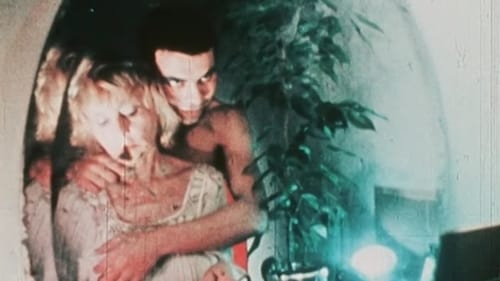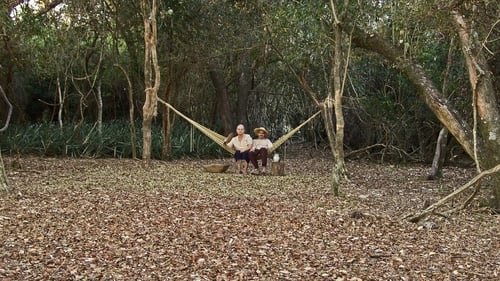Radio Dynamics (1942)
Gênero : Animação
Runtime : 4M
Director : Oskar Fischinger
Sinopse
An experiment into what the director termed 'colour rhythm'.

A shadow play about love and sorrow, featuring a girl, her bird friend and Death.

The film's subject is a photograph of Jane Fonda visiting Hanoi during the Vietnam War. It asks what the position of the intellectual should be in the class struggle and points out the irony of Jane Fonda's participation in the photo shoot, which was staged.

First screened as part of Jacobs' "Nervous System" film performance, The Georgetown Loop is based on an archival film from 1903, which Jacobs pairs with its mirror double to produce a kaleidoscopic two-screen projection. The original film depicts a journey shot from the cab of a train passing through the Colorado Rockies, and, in this hypnotic new form, comes to suggest the movement of consciousness itself.

Nico is an ethereal poet haunting the gaps between scenes of Jean-Pierre Kalfon, Bulle Ogier, Laurent Terzieff, and Garrel’s father, Maurice, discussing the filmmaker’s staple topics: love, psychoanalysis, and the failures of May ’68.

Vocal Parallels is a surreal, impressionistic concert of classical opera pieces performed by several retired Soviet opera divas: Roza Dzhamanova, Araksiia Davtian, Bibigul’ Tulegenova, and the late Erik Salim-Meriuert (Kurmangaliev), a fantastic countertenor.

A film by Pat O'Neill

The Little White Cloud That Cried, made in tribute to underground filmmaker Jack Smith, and described as: “Goddesses unharnessing the power of the sea and putting it into a whole new element as they engaged in orgiastic battles and whoopla.” —cinematical.com

Anna, an artist, is obsessed with the invasion of alien doubles bent on total destruction. Her schizophrenia is reflected in the juxtapositions of long movie camera takes with violently edited montages: private with public spaces; black & white with colour, still photographs with video, earsplitting sounds with disruptive camera angles. Anna uses her body like a map; after a devastating quarrel with her lover, she paints red stitches on herself. Watching their scenes together, we realize how seldom, if ever before, the details of sexual intimacy have been shown in film from the point of view from a woman. Export privileges rupture over unity and never settles for one-dimensional solutions

“Aleph” is an artist’s meditation on life, death, mysticism, politics, and pop culture. In an eight-minute loop of film, Wallace Berman uses Hebrew letters to frame a hypnotic, rapid-fire montage that captures the go-go energy of the 1960s. Aleph includes stills of collages created using a Verifax machine, Eastman Kodak’s precursor to the photocopier. These collages depict a hand-held radio that seems to broadcast or receive popular and esoteric icons. Signs, symbols, and diverse mass-media images (e.g., Flash Gordon, John F. Kennedy, Mick Jagger) flow like a deck of tarot cards, infinitely shuffled in order that the viewer may construct his or her own set of personal interpretations. The transistor radio, the most ubiquitous portable form of mass communication in the 1960s, exemplifies the democratic potential of electronic culture and may serve as a metaphor for Jewish mysticism.

Free-associative images are juxtaposed with disorienting poetry in Richter's late work. The film is visual dynamite: Upside-down and reversed footage, play with shadows and light, billiards and dice and balloons-- suggestive and surreal images. Tenets of Dada writing, such as games of chance, punnery, wordplay and loud nonsense noise are foist upon the viewer as Dada poems are read / performed by their orignal authors.

The residents in heaven are worried because Santa does not know what to do. All of the children would like a sputnik that beeps for Christmas. Nobody in Santa's crew knows what a sputnik is. So he has to go to earth and find out about it.

Experimental film with desert scenes in which optical printing is used to achieve unusual effects.

Alaska is a wordless experimental film with a simple, droning soundtrack that sounds as if it is a piece for violin and refrigerator hum.

A collection of inserts from B-movies, edited according to a structuralist scheme. The latent meaning of purely functional film language released through isolation and interposition. Preserved by the Academy Film Archive in 2010.

Detruisez-vous is a ‘primitive’ film which breaks all the rules of film-making. It’s the first Zanzibar film (and predates the very naming of the movement), an attempt to make a film which defies the rules of production, the production line of commerce

300 kilos of heroin have disappeared in Necrocity, a city of terror—a city of night—where Captain Speed has a gang and the government hides the dead. An experimental crime film considered to be a landmark of Parisian underground cinema.

A survival, silent black & white film shot with a hand camera, a journey into Philippe Garrel's intimate family album featuring the two women who counted in his cinematographic life: Nico and Zouzou.

Analogies: Studies in the Movement of Time uses a variety of multiple screen formats to create an intriguing series of visual riddles. The film consists of a series of simple camera movements that are rendered "diachronically"- several different aspects of the action are presented on the screen at once. By playing with time delays between these images, new kinds of space, action, gesture, and temporality have been found. Generated from structural principles, the film is both lyrical and sensual and provokes a new understanding of time and cinema.

Set in 1935, a couple of aged smallholders are waiting for their son, for rain, for better days.

"Impressionen vom alten marseiller Hafen," captures the steady hum of commerce of one of europe's biggest and most populous port cities.














